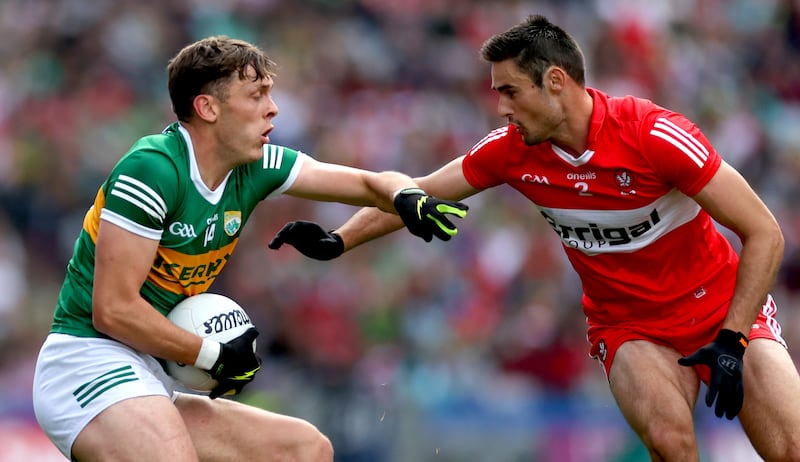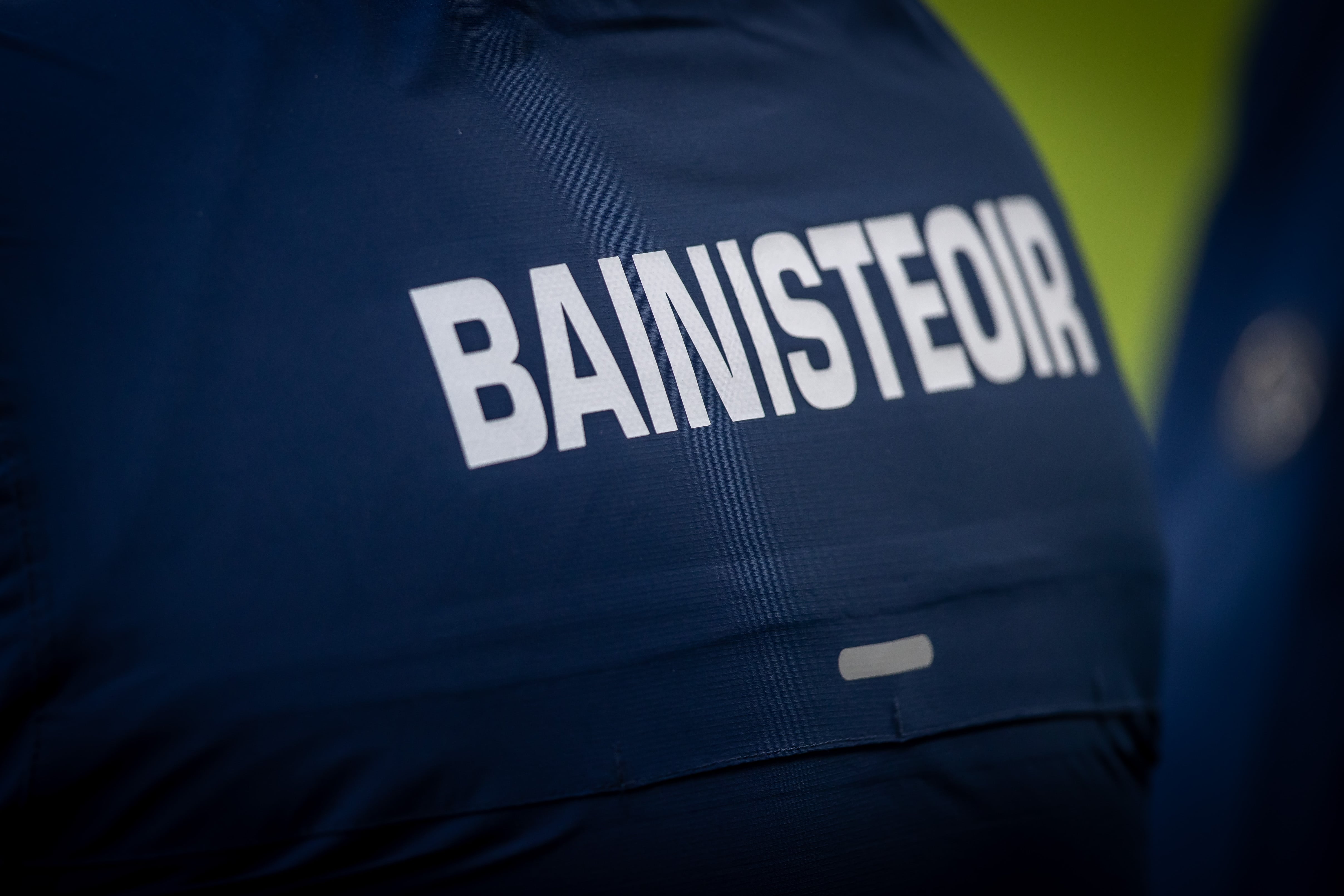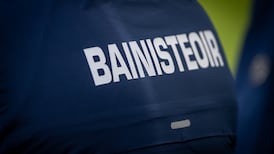Not for the first time, the balance of power in Gaelic football comes down to an All-Ireland decider between Kerry and Dublin. And yet it was finding the right balance between risk and reward last weekend that helped get both counties to summer’s final dance.
While the two semi-finals took on a life of their own, for me there was symmetry in how both contests were decided.
After 60 minutes in the Dublin-Monaghan game, the teams were tied on 12 points apiece. Dublin were struggling to shake Monaghan off. More was needed, and that meant Dublin re-evaluating the risk-reward dynamic of the encounter.
Dublin decided to adopt a higher-risk approach, pushed up aggressively on the Monaghan kick-out and stayed high in the press.
READ MORE
Brian Fenton kicked a good score to make it 0-13 to 0-12. Then, one minute later, the Dubs got the scent of blood in their nostrils. As Stephen O’Hanlon collected a short restart, immediately he was set upon by three Dublin players, who hounded him. Eventually he got the ball away to Rory Beggan, but the Monaghan goalkeeper was swallowed up. Dublin were relentless and eventually Monaghan’s resistance broke, they conceded a free which Paul Mannion converted.
It felt like a hugely significant moment in the game. It wasn’t a moment that just happened either, it was a moment created by work ethic, teamwork, and the aggressive nature in terms of how hard the Dublin players went after Monaghan in that period. By committing so many players high, Dublin took a risk but ultimately they got their reward.
It started on the hour mark and within 12 minutes Dublin’s full-court press mentality had helped them push four points clear, even before Dean Rock’s late goal. The final scoreline was harsh on Monaghan, but it was one that can only be fully understood through the prism of the risk-reward dynamic.
On a side note, watching the individual battle between Conor McManus and Michael Fitzsimons was one of the highlights for me. It was a fascinating duel between two old warriors. And when I say old warriors, don’t be fooled by the jargon because both were at the pitch of the contest throughout.
I couldn’t help but notice McManus took his time to leave the arena afterwards. As he hugged and embraced his mum and dad, you wondered if it might be the last time you’d see him in Croke Park.
During my time as Donegal manager we had some incredible battles with Monaghan, in particular the 2013 and 2014 Ulster finals. McManus was in his absolute prime then and he was certainly a guy who would keep you up the night before games because he had it all – speed, power, fantastic movement, decision-making, incredible accuracy, a brilliant free-taker and he had ice in the veins when he was in on goal. Whatever decision he makes, I wish him well.
On Sunday, the Chrissy McKaigue-David Clifford duel also made for compelling viewing. Two of my boys were with me and both were incredibly excited to see Clifford in the flesh.

Again, the risk-reward scenario was evident, and from early on. Derry goalkeeper Odhrán Lynch is their plus one and he dictated a lot of the play during the first half.
What is the risk-reward with him venturing out the field? The potential is he could lose the ball and that could result in a transitional moment, maybe the concession of a goal.
The reward for Derry comes in the form of the numerous overloads he creates. For me there is not a lot of risk because Derry don’t tend to lose the ball often and when it does happen they react really aggressively and quickly to try win it back. If they don’t, there is normally a foul committed to take the sting out of the opposition’s transitional play.
Derry’s goal was a classic example of how they like to play. Lynch progressed with the ball down the left flank – most of their attacks happened on the inside left or the inside right.
For the goal, Gareth McKinless stood almost motionless during the early stages of the build-up and allowed Lynch step on. It was almost as if McKinless wasn’t involved in the play, but he knew he was about to be released. He was hovering with intent, it was all about timing.
When the Kerry player shadowing McKinless stepped forward to impede Lynch’s progress, boom, the Derry number six took off. He got the ball and then Brendan Rogers assumed the ghost position of appearing to do nothing. Suddenly, boom, he was off as well. It was a goal straight from the training ground.
Derry led 1-11 to 1-8 at half-time, leaving Jack O’Connor with real tactical issues to ponder. Kerry had not pushed up on Derry’s kick-out in the opening period.
It was as if both Dublin and Kerry took the approach of: ‘Let’s see if we have enough to beat these guys without taking too many risks’. It turned out they couldn’t. Monaghan and Derry both came to Croke Park with very positive attitudes and purposeful game plans.
Kerry were forced to readjust their strategy at the interval and take an alternative approach that involved much more risk. Those half-time changes proved to be very successful.
Firstly, they brought much more intensity to their play while they also defended better in terms of shutting down the flanks. Stephen O’Brien’s introduction was also a plus.
But the most significant change was they went after Derry high up the park. In the last quarter they hunted Lynch’s kick-out aggressively and that was where the game flipped in Kerry’s favour. Derry scored 1-11 in the first half but only added 0-4 after the break.
Kerry’s attacking structure was also tweaked because they fisted a lot more balls inside during the second half. That was interesting because they are higher percentage passes, which means you have a far greater chance of retaining possession, reducing the risk of the opposition setting off on a rapid counterattack.
The squeeze on the kick-out is a double-edged sword but Kerry were able to force transitional moments, which against Derry is a rare commodity.
Despite all of that, by the 60th minute Derry still led 1-14 to 1-12. Then, with echoes of what Dublin had done the previous evening, the Kerry squeeze was ratcheted up. They came away with three Derry kick-outs in-a-row between the 66th and 70th minutes, and duly profited by moving from one point behind to leading by two.
Derry suddenly needed to score, so they pushed up and left gaps at the back. Gavin White was able to find Seán O’Shea in acres of space in front of the Derry D, unheard of with the Ulster champions all season.
The question on my mind walking out of Croke Park was how would the game have looked had Kerry gone for the jugular from the start? If they denied Derry their golden nectar – which is possession – from the opening moments, what type of a game would we be talking about?
It was hard to get my head around why Derry were allowed get away their kick-outs short in that first half, because possession of the ball is so crucial to their game plan.
There are big questions now for both Kerry and Dublin in relation to the risk-reward scenario. For me, the decisions management take in the coming days will have huge implications on where Sam rests this winter.















